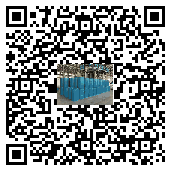Recommendations for the use of UV-curing anti-cratering additives
In UV-curing (UV-curing) systems, anti-cratering additives (leveling agents) are key materials for improving the surface
quality of coatings and preventing defects such as craters and pinholes. The following provides professional advice from
the aspects of action mechanism, selection principles, usage methods, precautions, etc.:
I. Action mechanism of anti-cratering additives
Anti-cratering additives prevent craters by reducing surface tension, improving wettability, and adjusting leveling:
Reducing surface tension: reducing craters caused by uneven surface tension;
Improving wettability: enhancing the adhesion of the coating to the substrate to avoid defects caused by poor wetting;
Adjusting leveling: balancing the flow and curing speed of the coating to prevent uneven surfaces due to insufficient leveling.
II. Key principles for selecting anti-cratering additives
Compatibility with UV systems:
Select additives that are compatible with UV resins, monomers, and photoinitiators to avoid affecting the curing speed and
performance.
Migration control:
Prevent additives from migrating to the surface during the curing process, causing stickiness or affecting the hardness of the
coating.
Yellowing resistance:
When it is suitable for outdoor or high light environment, it is necessary to select yellowing resistance additives.
Curing speed matching:
Ensure that the additives complete migration and action before UV curing to avoid residual affecting performance.
III. Usage method and process optimization
Addition amount and timing:
The recommended addition amount is 0.1%-1.5% of the total formula (specific needs to be determined through experiments),
added during the grinding stage or paint mixing stage to ensure full dispersion.
Pre-dispersion treatment:
Use solvents (such as water, alcohols) to dilute the additives and add slowly to avoid excessive local concentration.
Mixing process:
After high-speed dispersion or grinding, stir at low speed for 10-15 minutes to prevent the additives from being
damaged by excessive shear.
IV. Common problems and solutions
Pitting problem:
Check whether the amount of additives is insufficient or whether the surface cleanliness of the substrate meets the
standard (recommended surface tension ≤38 mN/m).
Poor leveling:
It may be that the additives do not match the system, and the type of additives needs to be adjusted or the amount
needs to be increased.
Insufficient yellowing resistance:
Replace with silicone or fluorine-modified polymer additives, and avoid using small molecule migration additives.
Sticky after curing:
Reduce the amount of additives, or choose low migration additives.
V. Recommended additive types and cases
Silicone leveling agent:
Applicable to high gloss coatings
Fluorine-modified polymer:
Applicable to low surface energy substrates (such as plastics)
Acrylic leveling agent:
Applicable to matte coatings
VI. Experimental verification and optimization
Surface tension test:
Use the hanging drop method or Wilhelmy plate method to detect the surface tension of the coating, with a
target value of 28-32 mN/m.
Leveling test:
Apply the coating on a glass plate, observe the leveling within 10 seconds, and record the leveling distance.
Pit simulation test:
Apply the coating on a contaminated substrate (such as silicone oil contamination) and observe the number
and size of pores.
VII. Safety and environmental protection precautions
Storage conditions:
Avoid high temperatures (<25°C) and direct sunlight to prevent degradation of additives.
VOC control:
Choose low-VOC or solvent-free additives to comply with environmental regulations.
Personal protection:
Wear protective gloves and goggles during operation to avoid skin contact and inhalation.
VIII. Summary
Core principles: Balance the anti-shrinkage effect with coating performance to avoid excessive addition
leading to other defects.
Optimization direction: Combine substrate characteristics, coating system, and construction process to
comprehensively adjust the type and amount of additives.
Verification method: Verify the effect of additives through experiments such as surface tension, leveling,
and shrinkage simulation.


